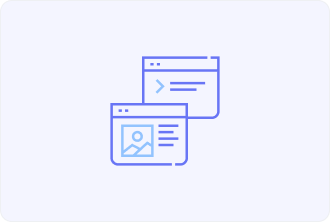Full Stack Definition

“Full Stack” purports to mean a complete suite of skills for both ends of a web application. Therefore, a full stack developer could be referred to as any kind of developer who has the ability to work across the complete spectrum of technologies needed to construct a fully functional web app.
Understanding full stack

Full Stack is the mastery of a host of technologies that lie essentially both in the front end and in the back end of a web application. That usually means front-end languages, such as HTML, CSS, JavaScript, and one of the major libraries and frameworks, React, Angular, or Vue.js.б which help create the part of a website with which users can directly interact: layout, design, and interactive features.
Server-side languages include Node.js, Python, Ruby, or Java, together with databases like MySQL, MongoDB, or PostgreSQL. In such development, the back-end focuses on business logic, server management, and its configuration to power the front-end experience.
Such a holistic approach to work empowers programmers to do diverse work like user interface designs, and optimizing server performance, among many more.
The role of full stack development
Full stack development allows for a much more holistic strategy to the construction of applications, whereby one developer or even a very small team can be responsible for the client- and server-side of any project. This is what matters the most for startups and smaller businesses where resources — a number of developers — are few and speed in prototyping and implementation of ideas is most needed.
It also enhances communication and collaboration among the development teams. Since full stack programmers are conversant with the entire application lifecycle, they are able to bridge the gap between the front-end and back-end crews easily to ensure that both parties work cohesively. This minimizes misunderstanding, smoothening the engineering process and leading to earlier completion of projects.
Also, full stack development is very much associated with the Agile methodology, which has iterative progress and flexibility as its inherent ingredients. A full stack developer can easily get into an Agile environment since he or she can switch quickly in all parts of an application and thus contribute to any stage of development, starting from the straw man design until deployment and maintenance.
The demand for full stack developers
The full stack developers bring special value to the table, because such a “big picture” view encompasses both architecture and maintenance issues. That’s why they need to have far-from-ordinary knowledge about every facet, from optimization of database queries, user experiences to rigid security measures.
Having general knowledge, they observe problems from different angles and can propose solutions that may not be so evident to someone concentrating on a single area of development.
Further, with changing technology, a full stack developer has to upgrade him/herself time and again. One must endeavor to keep abreast of new frameworks, languages, and tools to remain relevant.
Conclusion
A full stack developer is positioned to be able to take care of quite a wide array of development challenges, hence holding an irreplaceable position in any successful engineering team by mastering both front-end and back-end technologies. As the tech industry is still under rapid evolution, the role of a full stack developer will be to ensure innovation goes on and the correct applications are built as expected.